Every year, US companies produce a staggering 400+ million tons of hazardous waste. There are workers all over the country treating, storing, and disposing of the waste properly to keep the general public safe.
However, these workers also need protection. In respect to this, OSHA gathered inputs from several agencies combining existing regulations to create 29 CFR 1910.120 Hazardous Waste Operations and Emergency Response Standard (HAZWOPER).
What is HAZWOPER, and how do you achieve HAZWOPER training compliance? Keep reading for the complete guide to HAZWOPER training.
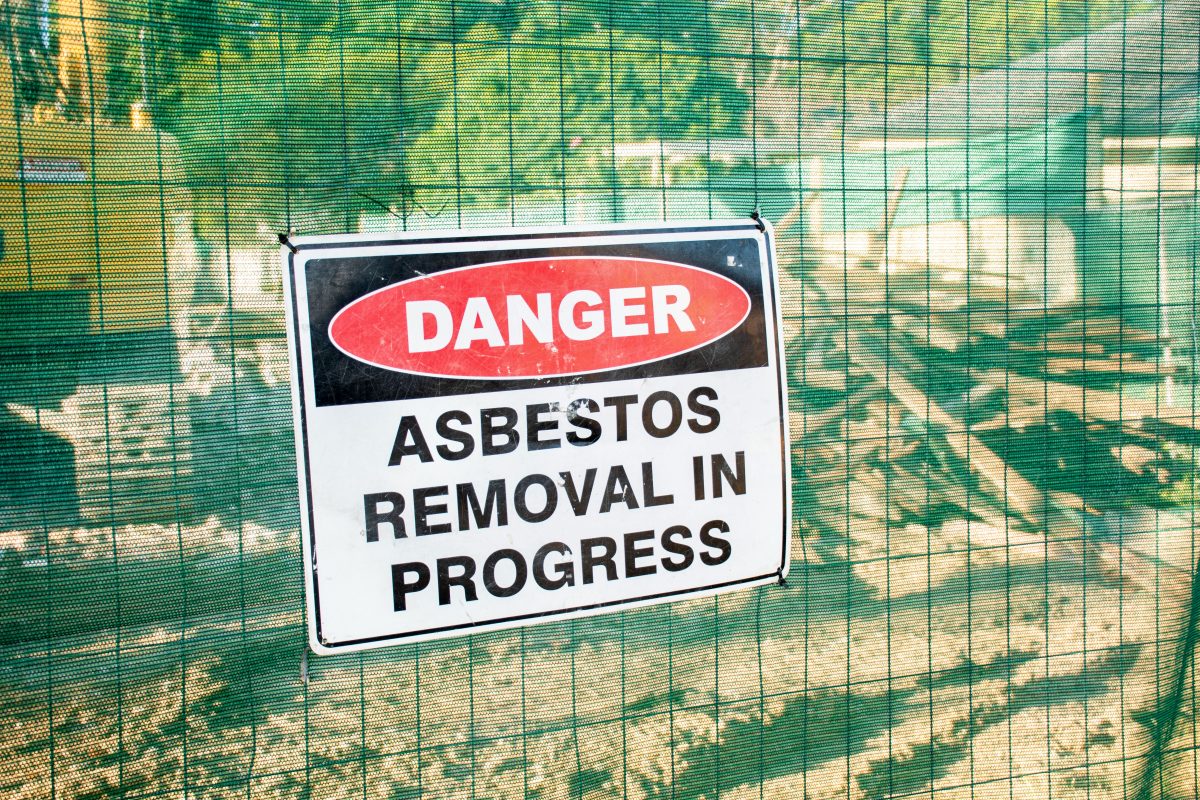
What is HAZWOPER?
HAZWOPER is the OSHA standard covering operational procedures and emergency response concerning hazardous waste.
Under section 1910.120 of the OSHA standard, a hazardous substance may fall into four categories:
- Any substance filed under section 103(14) of the CERCLA. Comprehensive Environmental Response Compensation and Liability Act (42 USC 9601).
- Any disease-causing or biologic agent that can cause death, disease, or behavioral abnormalities upon ingestion, exposure, or inhalation after being released into the environment.
- Any substance defined by the US Department of Transportation (DOT) as a hazardous material.
- Hazardous waste, i.e., substances defined as hazardous waste or a combination of waste under 40 CFR 261.3 or 49 CFR 171.8.
The HAZWOPER standard aims to ensure the safety of workers performing response actions or hazardous waste clean-up.
The standard provides the training criteria as well as the safety requirements that employees dealing with hazardous waste must understand and practice to ensure their safety in specific capacities.
HAZWOPER applies to employees exposed to any of the following:
- Clean-up work in a natural disaster zone or a devastated area where hazardous materials are present.
- Work at an abandoned tank farm or hazardous waste drum
- Clean-up work at an industrial site or military base where environmental damage was caused by long term mismanagement of hazardous waste
- Contaminated soil remediation work (e.g., asbestos or lead)
- Work at a landfill containing an uncontrolled hazardous waste
- Contaminated and unsafe groundwater remediation work
What Constitutes a Hazard Under HAZWOPER?
Hazards covered by HAZWOPER are mostly response activities where there is a release of a hazardous substance or a potential for an uncontrollable release to occur. Below are the examples of the situations that might ignite a hazardous waste emergency that HAZWOPER covers:
- An environment with an oxygen-deficient atmosphere
- Circumstances that pose a fire or explosion hazard
- The concentration of toxic materials
- Immediate evacuation is required
- Risk of injury or death
HAZWOPER classifies the spill of a hazardous substance into an incidental or emergency spill. There is no significant health or safety hazard for the employees cleaning it up for an incidental spill. Also, they don’t have the potential to turn into a threat or an emergency. In such situations, trained employees who are familiar with the substances can handle it.
The differences between emergency and incidental spills lie in their toxicity, quantity, and exposure potential. There is also a difference in facilities provided for each spill, including employee training, pre-established procedures, and PPE available.
However, responses to incidental releases don’t fall under the HAZWOPER standard.
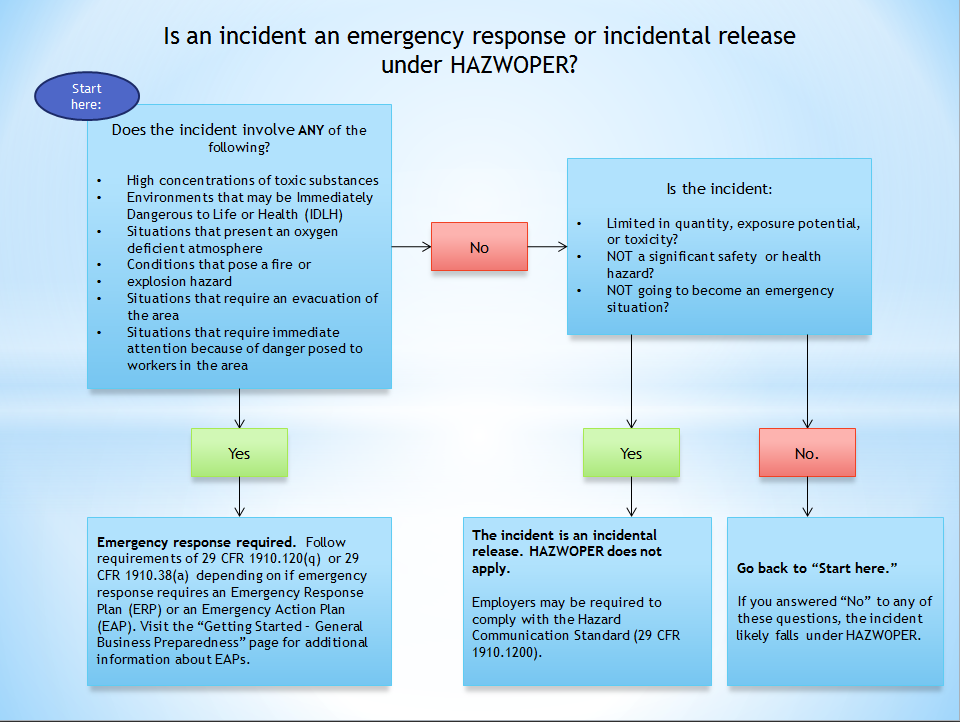
Who Needs HAZWOPER Training?
Generally, HAZWOPER training outlined by OSHA in 1910.120(a)(1)(i-v) and 1926.65(a)(1)(i-v) is for workers (and supervisors) who experience any of the following hazardous work conditions:
- Government-approved clean-up operations are conducted at uncontrolled hazardous waste sites.
- Clean up operations and corrective actions at sites covered by the RCRA; Resource Conservation and Recovery Act of 1976.
- Operations or work involves hazardous waste conducted at storage, treatment, and disposal facilities filed under the 40 code of Federal Regulations or individual agencies under agreement with the US Environmental Protection Agency to implement RCRA regulations.
- Emergency responses to the situations that pose the release of hazardous substances regardless of the location the hazard occurred.
These standards apply to three major job profiles:
- Uncontrolled Hazardous Waste Site Operators/ Cleanup Site Operators
- Treatment Storage and Disposal Facility Personnel (TSDF)
- Emergency Responders
Learn more about industry-focused OSHA regulations from our guide: Which OSHA Regulations Apply to Your Business? by Dave Paoletta, MS, MBA, CSP, CUSP.
Uncontrolled Hazardous Waste Site Operators/ Clean-up Site Operators
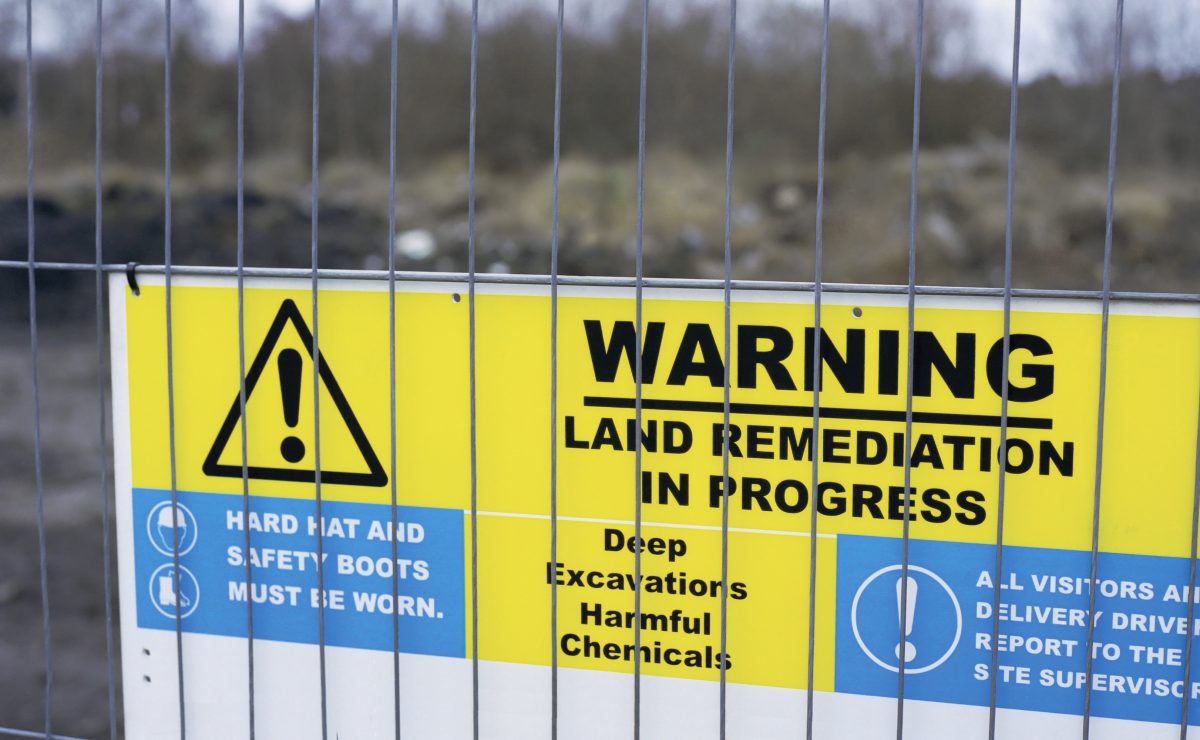
These are workers working directly in a hazardous waste clean-up activity or directly interact with dangerous substances. Clean-up workers primarily work on sites identified by local, state, or federal governments. These are areas with an accumulation of potential hazards for the safety and health of individuals, the environment, or both.
Examples include workers at:
- brownfield sites
- Superfund sites
- abandoned industrial sites
They are protected under section (1910.120(a)(3)) and are responsible for a clean-up and remediation.
OSHA mandates that any clean-up involving hazardous substances after the completion of an emergency response must be in accordance with HAZWOPER standards. Such cases are also called post-emergency response cleaning operations.
For instance, if the employees conducting the clean-up are from the plant where the work is done, they need to be trained according to OSHA Emergency Action Plan Standard and other health and safety training that complies with HAZWOPER standard.
What are Non-Emergency Hazardous Waste Site Cleanup Operations?
In some cases, clean-up activity does not originate from emergency response and falls under the HAZWOPER standard. Before a site can be considered to be a hazardous waste site that requires a clean-up operation, it must satisfy any of the following conditions:
- Proposed for listing or already listed on the National Priority List (NPL).
- A government agency lists or identifies the site as an uncontrolled hazardous waste site.
- It exists on a State priority list or a proposal exists to place it on a State priority list
- If the Resource Conservation and Recovery Act (RCRA) regulates it as a corrective action.
Treatment, Storage, Disposal and Facility Workers (TSDF)
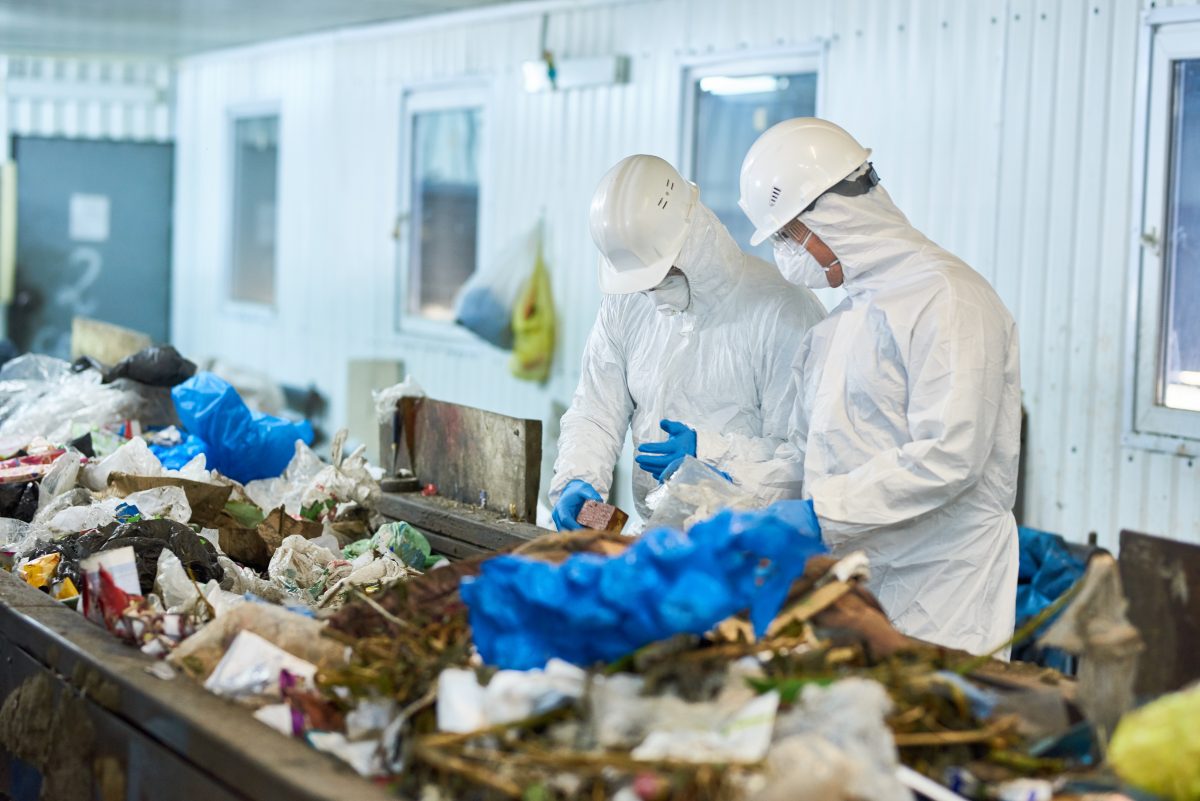
This personnel works only at permitted hazardous waste facilities to handle waste during treatment, storage, and disposal. TSDF personnel work at facilities regulated under RCRA, mostly built and authorized to process waste from uncontrolled sites, receive, treat, store, and dispose of hazardous waste after fully identifying their concentration. They have protection under section 1910.120(p).
Examples of TSDF personnel are workers responding to waste before disposal and those handling waste at an RCRA landfill.
With the recognition of health and safety standards, TSDF emergency workers have the training needed to protect themselves and other employees. The following are the qualities such a member must possess:
- The use of appropriate personal protective equipment(PPE)
- Correct use of safety equipment
- Understanding and providing an appropriate response to overexposure from injury or health hazards to other workers or themselves.
- Awareness of possible symptoms that could result from overexposure
- Understand the safe operating procedures to apply at the incident scene
- Proper recognition of health and safety hazards
- Ability to work with other workers to reduce risks
Emergency Responders
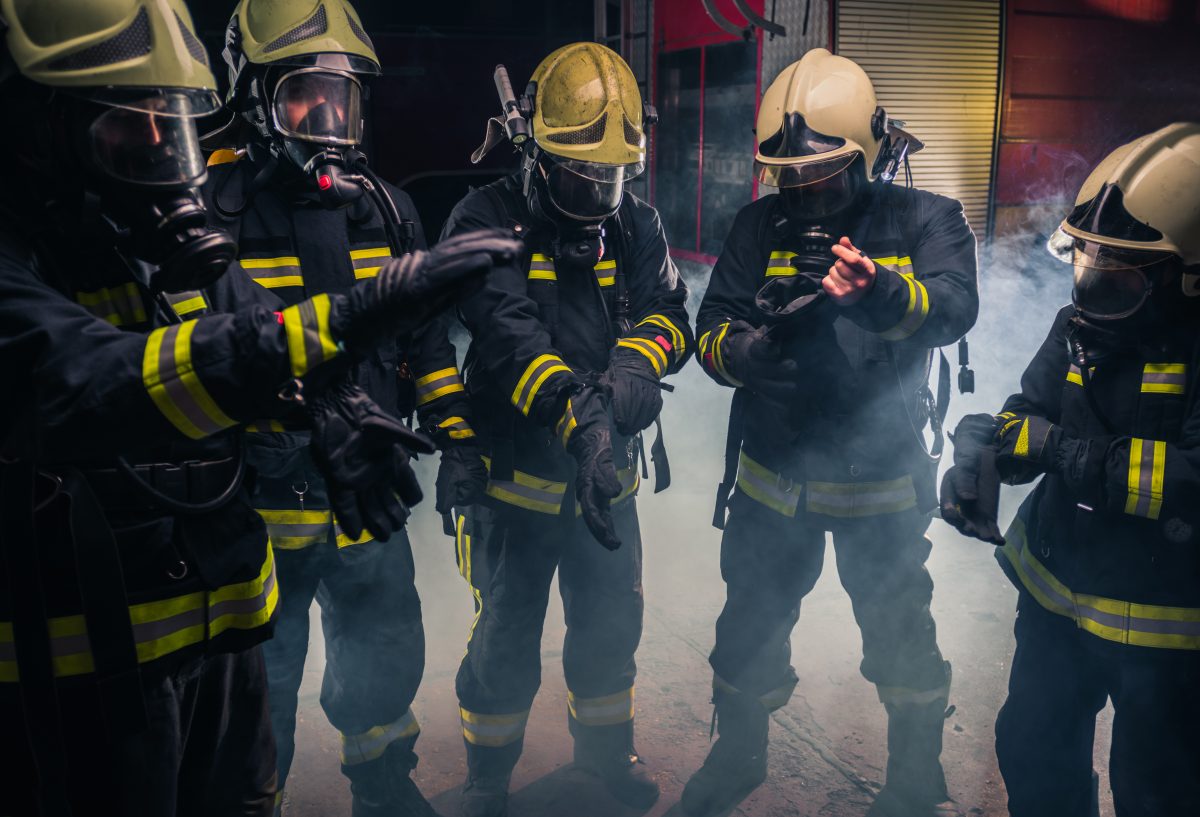
Emergency responders attend emergency cases of the release of hazardous substances. They include firefighters and facility employees employed to tackle on-site emergency response for their employers. They work in locations where an accidental release of a hazardous substance or a site poses a severe threat of such release.
Emergency responders have protection under section 1910.120(q).
Examples include:
- Facility workers dealing with an uncontrolled spill or leaking storage.
- Emergency Railroad response teams handling a ruptured tank car.
- Local fire departments dealing with overturned HazMat trucks or chemical fires.
Levels of Emergency Response
- Level 1/ Awareness level – First Responder: These employees don’t engage in any active response. For example, they see a release or spill, evacuate immediately, and get someone else to help (e.g., inform the management or alert the fire department).
- Level 2/ Operations Level – First Responder: These employees will quickly take defensive action to curb the release. Typically, they try to protect properties, nearby persons, or the environment. They do not respond to the release to stop it. Rather, they take immediate action to prevent an unfavorable result from the release. For instance, first operational level responders to a leaking drum will put protective barriers around it but wouldn’t plug it.
- Level 3 / HAZMAT Technician: These are trained employees who will respond to the release to stop it. They often attack the release aggressively and offensively without waiting for any approval from another higher authority. In short, they already have the training needed to be effective in such situations.
- Level 4 / HAZMAT Specialist: These specialists often act as liaisons to government authorities who provide support and guidance to technicians during any emergency release.
- Level 5 / On-scene incident commander: These employees oversee the entire control of the incident. They control the whole response team.
Relationship between Skilled Support Personnel, Specialist Employees and Emergency Response Teams
Skilled support personnel are those that are skilled and knowledgeable with the use of specific equipment. They perform temporary immediate emergency support work and are not necessarily the employer’s own employees.
Also, specialist employees are workers who provide technical assistance on a hazardous substance concerning their expertise.
Unlike emergency responders with thorough training for emergency responses, specialist employees and skilled support personnel also have a role to play in emergency response. According to OSHA, doctors and chemists aren’t a type of skilled support personnel. Instead, they are specialist employees who demonstrate competency in their area of expertise annually. Alternatively, backhoe and crane operators do fall under the umbrella of skilled support personnel.
However, if their job demands that they regularly enter a contaminated area, they must undergo the HAZWOPER training.
What is HAZWOPER Training?
Rather than focusing on particular responses, HAZWOPER trains workers on the procedures and policies that protect workers while performing response activities. For instance, the training will teach you how to remain safe while plugging a chemical leak. However, it won’t train you on how to plug the leak.
There are different levels of HAZWOPER training, each covering specific topics with minimum training time. The intensity and the level of training are determined by the degree of the hazard and work performed by the employee. The basic training includes a 24-hour and 40-hour course together with a yearly 8-hour refresher course.
Before you decide which training to go for, you should know the difference between training levels that differ in situations. For instance:
- 24 hours of training plus one day of supervised hands-on training are required for workers limited to a specific task.
- General site workers are expected to undergo supervised 40 hours of instruction and hands-on training.
- Supervisors and managers must complete an additional 8 hours of training aside from their training with those they supervise.
It is imperative to choose and confirm relevant training that suits your specific role to ensure that the training overlaps.
Get more info on industry safety compliance from How to Comply with OSHA Safety Training Standards by Dave Paoletta, MS, MBA, CSP, CUSP.
Who Doesn’t Need HAZWOPER Training?
Obviously, HAZWOPER is not for everyone. If your work falls in any of these three major categories (Cleanup Site Operators, Treatment Storage and Disposal Facility Personnel (TSDF), Emergency Responders), you are expected to enroll in any of the HAZWOPER course that suits your role; otherwise, it is not designed for you.
Similarly, if your operation falls outwith HAZWOPER’s scope, but you only work near an identified contaminated zone with no reason to enter it, you are likely exempt from the training requirements. In most cases, employers must demonstrate that there is no possible threat to their exposure at the workplace.
However, some employers take their caution a step further by introducing HAZWOPER training to the employees who might encounter hazardous waste. In this case, OSHA provides competency-based training that targets their specific exposure risk instead.
Who May Provide HAZWOPER Training?
OSHA has set some qualifications for trainers in compliance with the HAZWOPER standard.
Before training employees on any topic, OSHA mandates that the trainers possess academic credentials with the instructional experience necessary to teach the subjects. Alternatively, they must have completed a training program to teach the subjects to a satisfactory level. The goal is to ensure the trainers have a good command of the HAZWOPER subject matter and pass on the knowledge understandably to the employees.
HAZWOPER Keeps Workers Safe
The overall aim of HAZWOPER is to protect the well-being or safety of emergency responders, TSDF personnel, and clean-up site operators. With proper planning, research, and training, HAZWOPER compliance is relatively straightforward.
Moreover, the processes and the benefits are clear for workers and organizations. By practicing safe hazardous waste procedures, you demonstrate that you care for your workers’ health. In addition, you save money by obeying the law.
